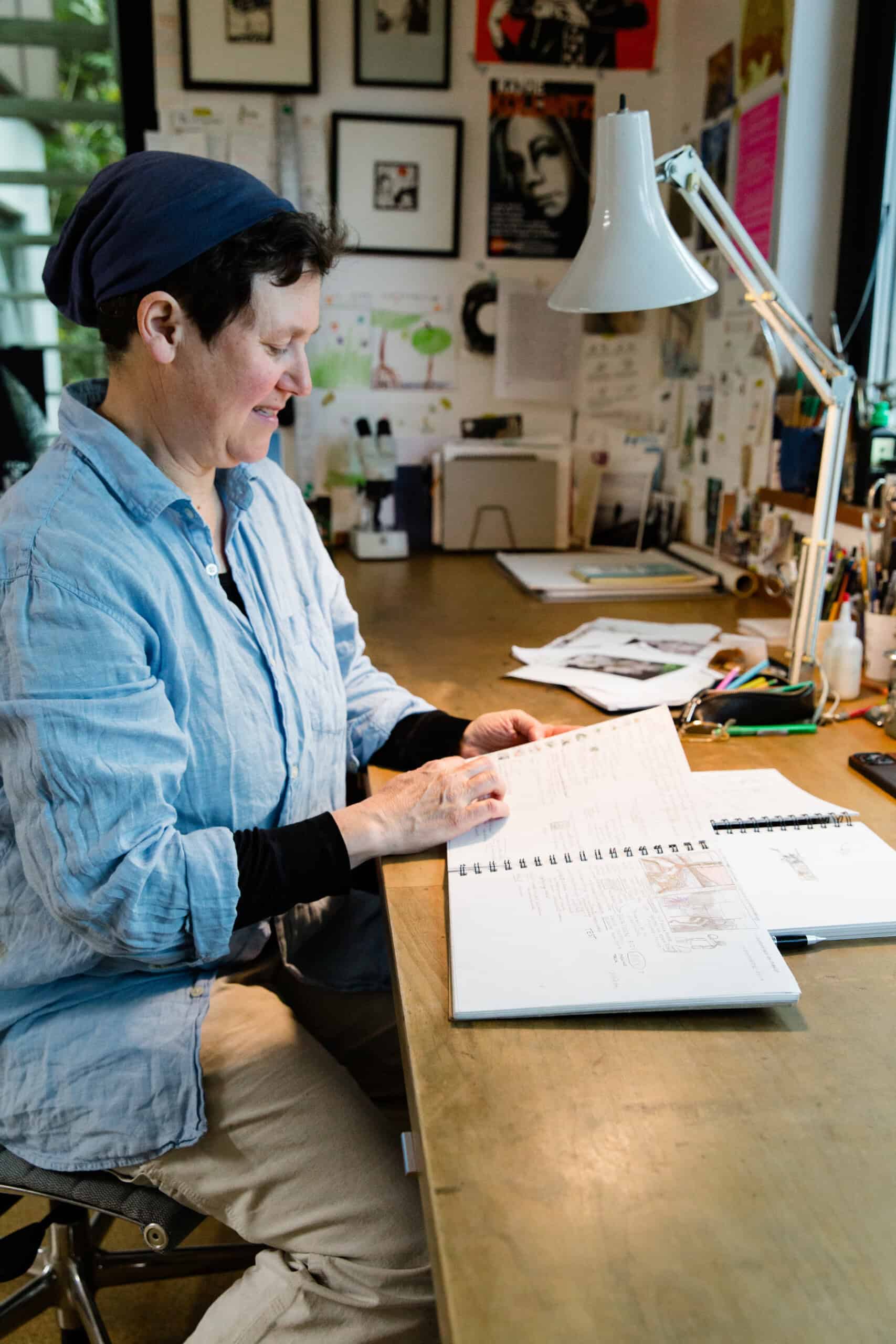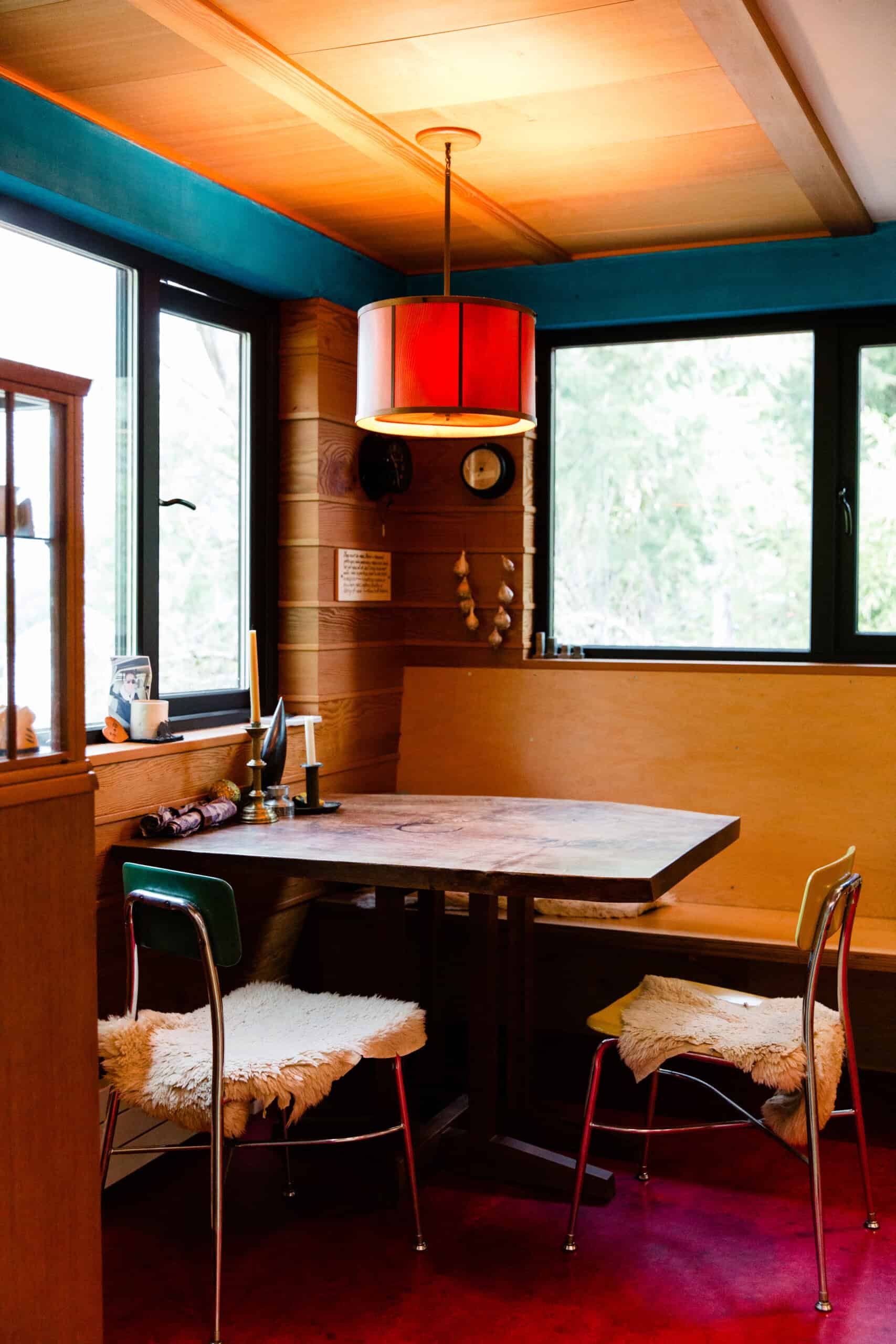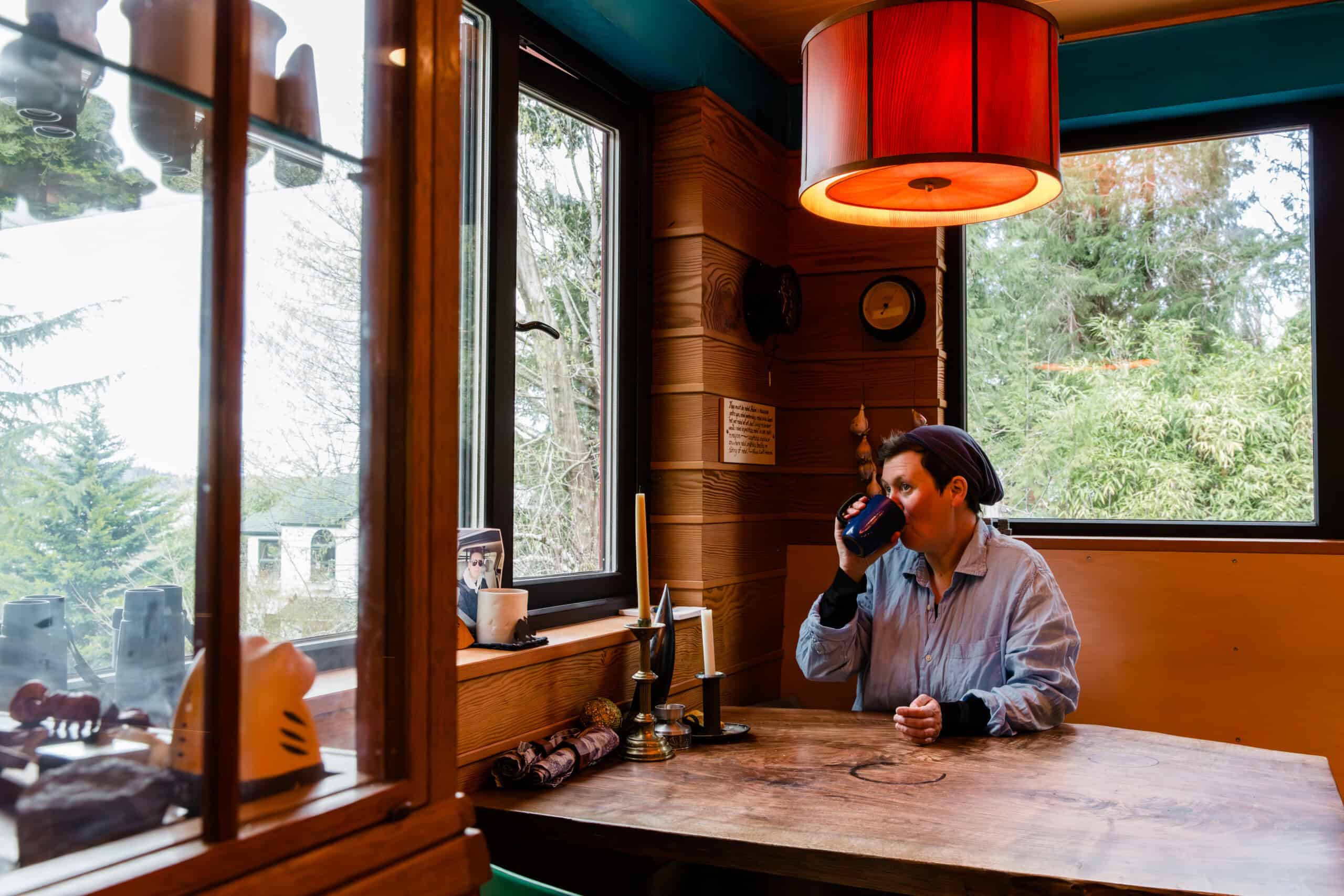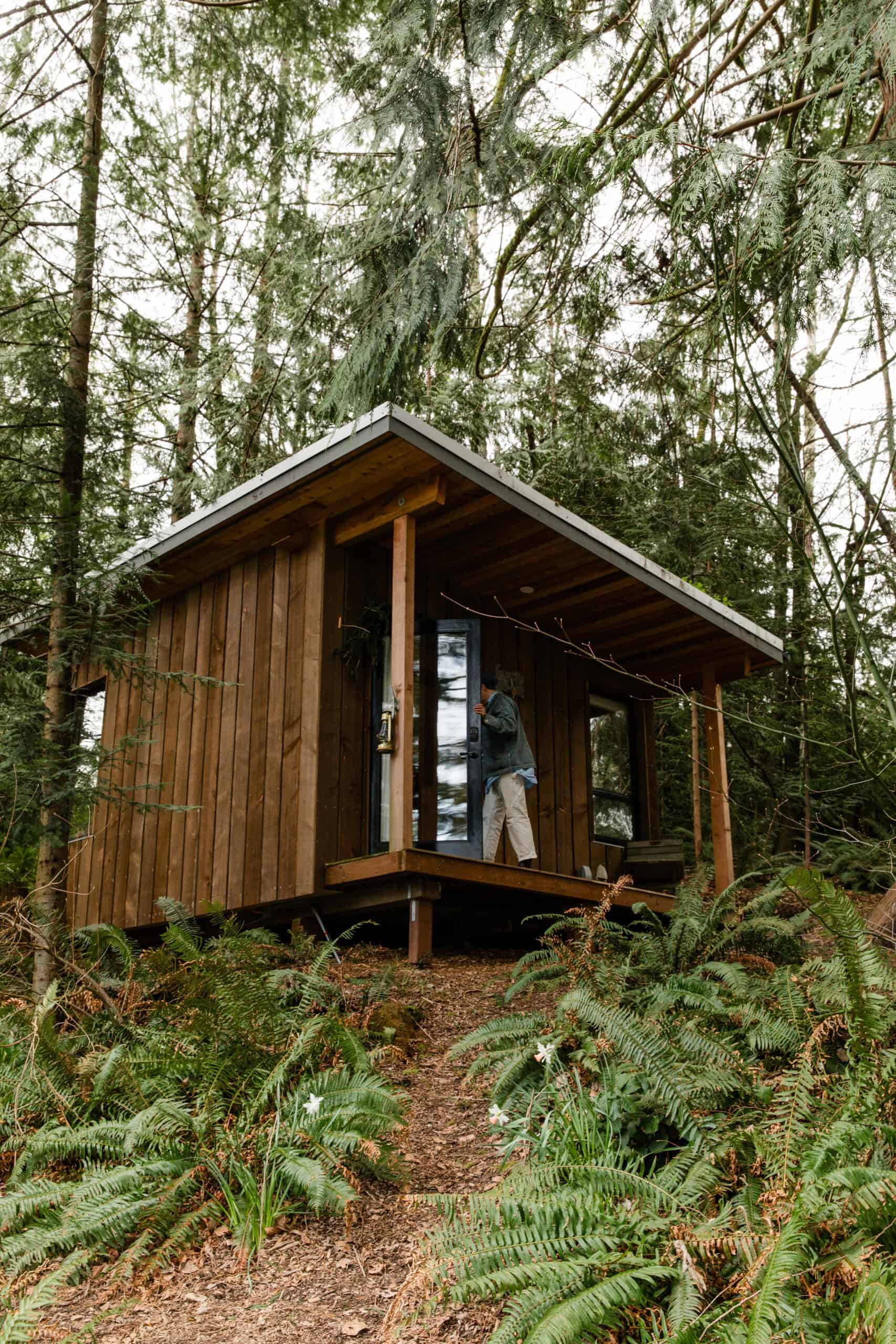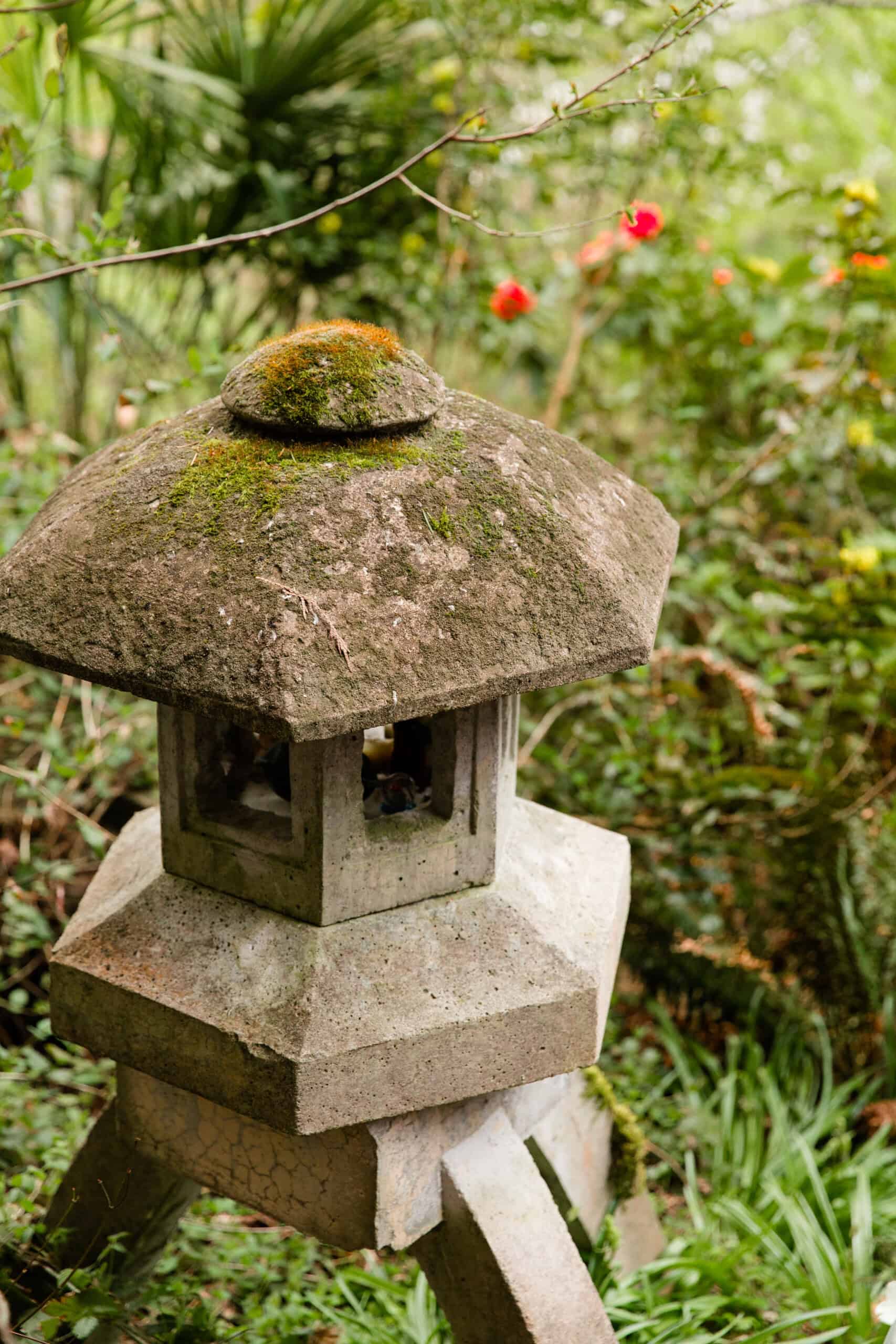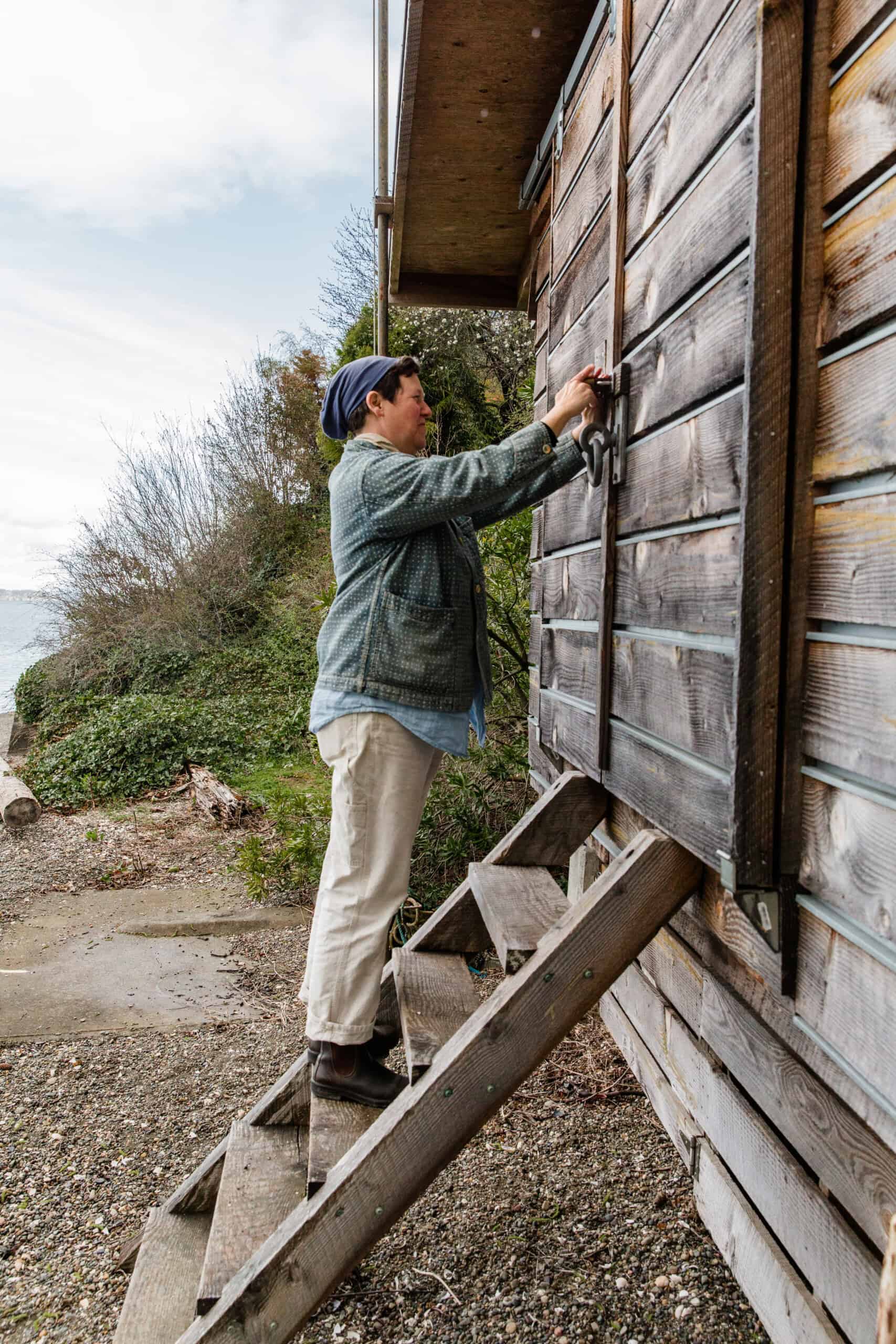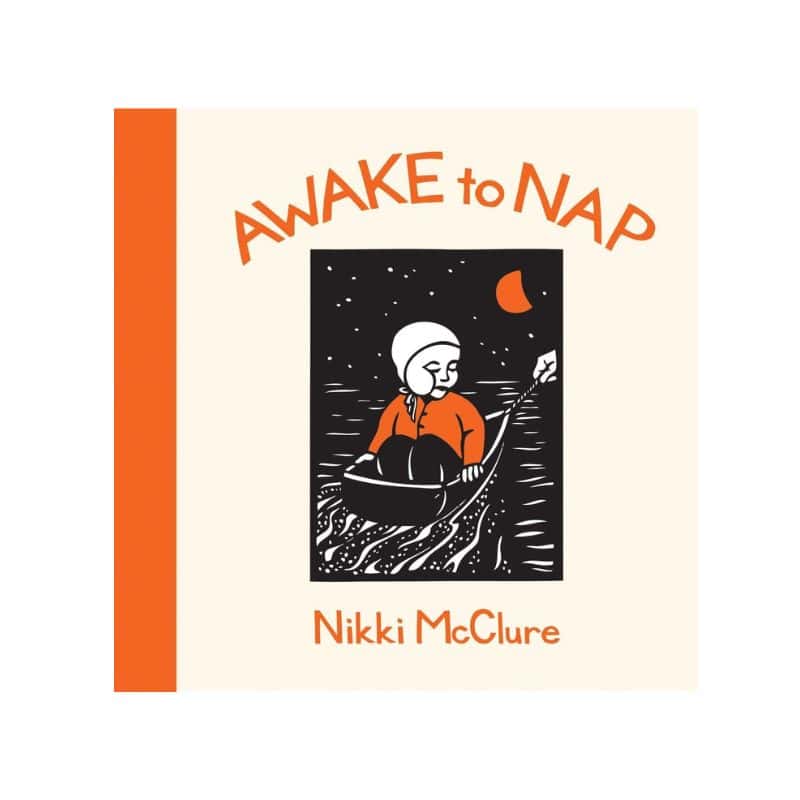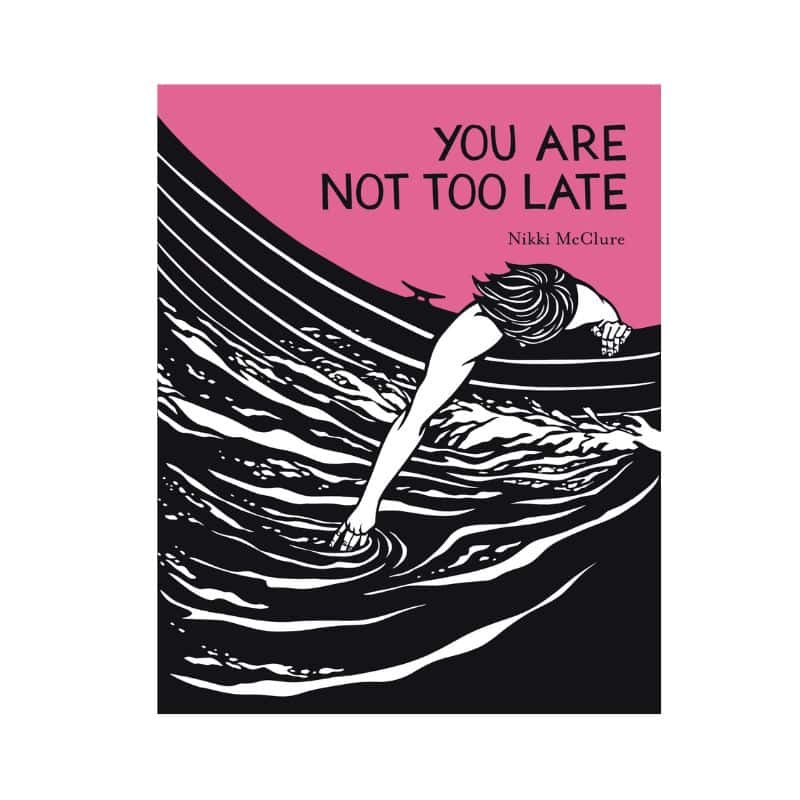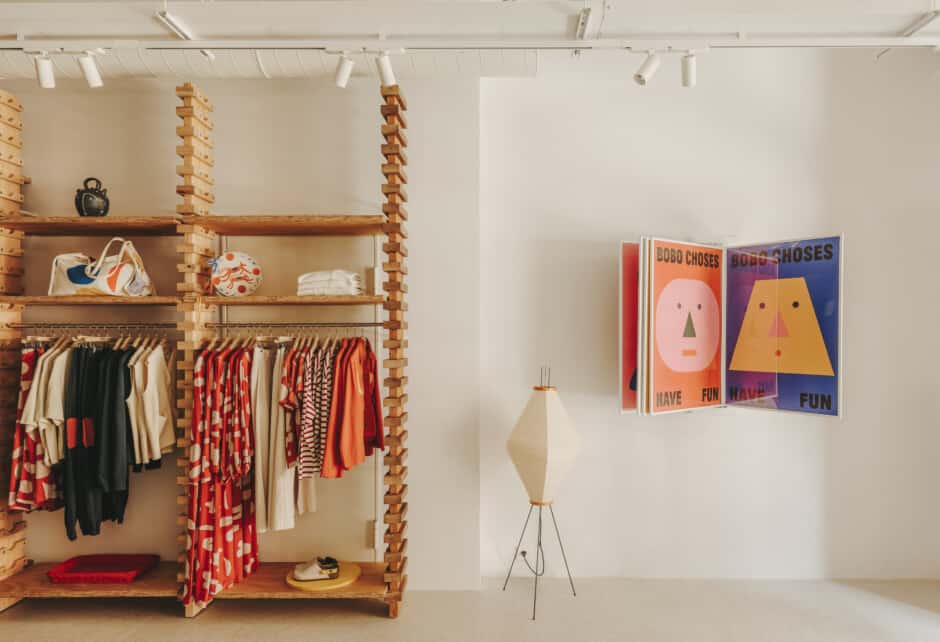
In The Studio With Nikki McClure

Written by Katie Hintz-Zambrano
Photography by Emily Keeney
The nature-obsessed author and illustrator invites us into her stunning seaside home and studio in Olympia, Washington.
Earth Day is every day for prolific author and illustrator Nikki McClure.
The renowned paper-cutting artist and kid-lit author/illustrator lives in a beautiful, cabin-like home that’s nestled in the woods, with vistas of towering trees and the lapping sea everywhere you look. Built by herself and her partner, this integration into nature was intentional—and serves as the chief inspiration for her one-of-a-kind work.
With her encyclopedic knowledge of Mother Earth, it might come as a surprise that Nikki didn’t grow up this way. “My mother was from Michigan, she didn’t know the woods here. She didn’t trust the berries,” she explains. “But I was compelled by wonder. I watched ants and bees and had a knack for knowing where the patches of four-leaf clovers were.”
Nikki ended up passing this love and curiosity down to her son Finn, now 20. “We raised him with an intimate coexistence with the Earth and the Sea, mud in his toenails, salt crusted and barnacle scarred,” she remembers.
Our visit to Nikki’s home and studio in Olympia, Washington coincided with the release of her latest book, Something About The Sky, which is based on a previously unpublished essay by the one-and-only Rachel Carson (author of Silent Spring and known as the finest nature writer of the 20th century).
In our interview and home tour below, Nikki tells us—in the most poetic way—about her incredible journey through life, creativity, and motherhood (so far).
Grab a cup of something warm and settle in!
You can follow Nikki at nikkimcclure.com and on Instagram at @nikkimcclure.
Be sure to support her stunning new book, Something About The Sky, wherever books are sold.

Tell us about your workspace.
"We built our house and moved in on April Fool’s Day 2012. My studio is half of my home’s daylight basement. The house sits on a slope and is near the water, so my home and studio share the same foot print and same roof to minimize impact on the cedar forest. We fit it into the space that an old house was in, tucking into tall trees that grew up around the old home."
"My studio is very utilitarian and practical. My work desk feels like the helm of a cargo ship. It is 15-feet long and I roll on my chair from left to right like a typewriter. Draw. Cut. Scan. Email. Repeat with a slide, and I return to do it all over again. The windows face west, which is not the best light for working, but great light for calling it quits at 3pm and going outside! So I accept that fact and usually end my day when the shadows of light rake across my work. I can also see peeps of water from where I sit amongst the trees, and many, many birds."
"Part of my studio is devoted to the 'Dream Cube,' a walled in cabinet bed. It serves for quick naps, guest bedroom, and sick bed. The doors close and the 'Dream Cube' becomes its own tiny fort of a room. Kids love to shut the doors and read in there. I do that too when I am researching projects."
Do you have regular hours that you come to your studio to work?
"I keep a fairly regular schedule. It really cemented as parents taking turns caring for our kid. My husband, Jay T, and our child, Finn, would go on walks while I worked. We would have lunch and then Jay T would go work as a fine furniture maker, and Finn and I would hang out, nap, read, putter. And that became how I work now still. I get up, eat, take a walk, and start work around 9 or 9:30. I’m usually locked into making by 10. Then it’s lunch and in my ideal world, another walk, then I work again until the light shines too bright on me. Then I start dreaming up dinner, which I consider another creative act of work, then emails, reading, a walk or swim, or chat with friends, a bath, then bed, and dreams and a notepad beside me for the word that choses to appear at 3 a.m."
“We raised our son with an intimate coexistence with the Earth and the Sea, mud in his toenails, salt crusted and barnacle scarred.”
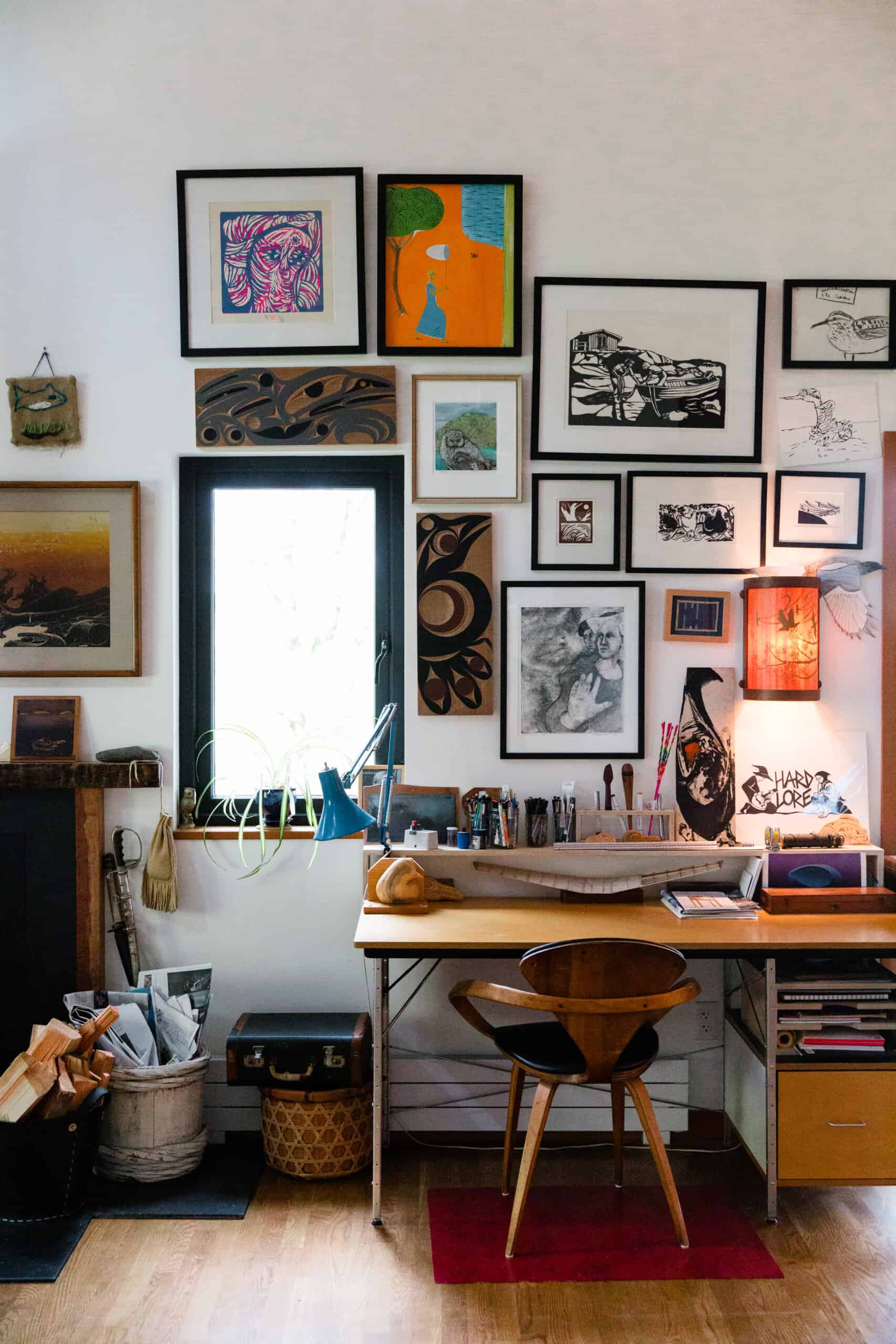

Do you have a routine once you get in your studio to get into a creative mood?
"I take the long way to work. Instead of walking downstairs, I go outside and walk a mile through the woods, along a beach and up the hill to my house, where I then go inside my studio, put on my slippers, don a tattered lab coat, and take my broom and start sweeping up the work of yesterday: lots of minute bits of black paper. Once that is done, I sit down and resume where I left off so suddenly yesterday afternoon."
Outside of the studio, what are some of your creative habits you lean on to get inspired and come up with ideas for your art?
"Outside of my studio is an apt way to word it. Outside! I go outside and walk and putter. Yesterday it was spent wandering the woods barefoot for the first time this year on the lookout for ivy seedlings to pull while they still only had 2 leaves. Once they get three, they become tougher to weed from the soil. It is also cottonwood bud season, so my soles were covered with sticky cottonwood buds and smelled deliciously sweet from the resin. I don’t know if I’ll ever make an image of this, but it was very inspiring aromatherapy and tactile sensation! Dinner, infused with cottonwood, was superb. A Caesar salad made with a goose egg!"
"Walks are definitely my go-to. Walking and the rhythm of movement and the chance meeting with the neighborhood of plant and animal and air is my vision portal. And swimming! After this spell of typing these responses, I will catch the falling tide and go for a cold spring swim."
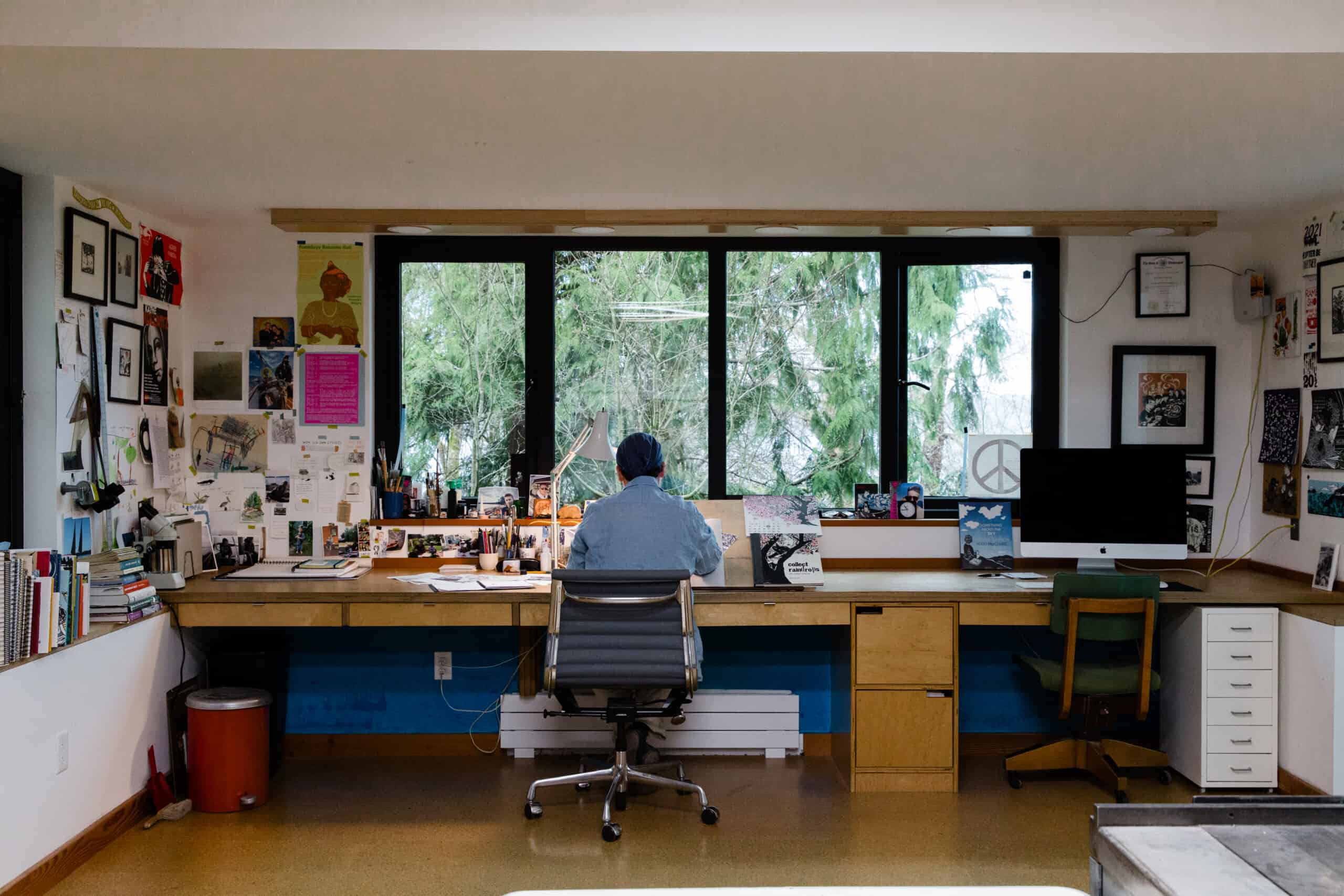
Was nature something you were exposed to early, as a child?
"This question stirs up many thoughts. My parents divorced when I was five. I remember some early camping trips and some fish gutting from photos. My first memory is of touching a tiny golden ball and it scattering into thousands of baby spiders. My second memory is of a garter snake brought to the back door by our cat. But once the divorce happened, I became feral. I don’t remember being 'raised.' Were children raised in the 70s?"
"Me and my sisters were left to ourselves mostly. My father was a Boeing engineer and remarried his secretary. My mother became a waitress and bartender and eventually a florist and provided for us aided by insufficient child support. She worked nights. We cooked dinners and made cakes with food bank mixes. And watched TV. We moved every year to a cheaper house."
"My mother was from Michigan, she didn’t know the woods here. She didn’t trust the berries. But I was compelled by wonder. I watched ants and bees and had a knack for knowing where the patches of four-leaf clovers were. We lived one year in Duvall, on farmland with a creek full of caddisfly larvae and salmon and we had a luxurious garden. I was frequently wet and muddy growing up. My hair was long with a thick dread in back that was painfully brushed out every couple of months."
"My mom was artistic. She would paint sometimes and loved being a florist, but time and work and three kids and, though we made dinner, I don’t remember washing dishes or taking out the garbage. And never remember washing my muddy clothes. So she literally had piles of things to attend to instead of watercolor painting, including piles of bills. I remember her paying bills most of all. That is growing up."
"My mom moved to Friday Harbor when I was 15. I stayed in Kirkland, lived in my grandmother’s attic, cut my hair short, and started going to punk shows in Seattle."
Where did you go to school and what did you study?
"I went to college at The Evergreen State College in Olympia, Washington, where I studied Natural History. What I really wanted to be was an Artist. But such people did not exist. So I decided to be a Marine Biologist and enrolled in a program where we sailed once a week. And what I learned wasn’t Marine Biology, I learned to see. I learned to wonder 'How come?.' It was a favorite question of my professor. 'How come?' 'How come I have never tasted a salal berry and I grew up in these woods?' My mother did not grow up here. She did not trust the berries. 'How come this fly is waving its wings and did it just squirt something white from its abdomen? And now, another fly is lapping it up? And now are they are mating?'"
"Berry eating. Fly sex. Evergreen State College opened my eyes to the whole wonderful world and I couldn’t ask enough questions nor learn enough. So Marine Biology expanded to Natural History. And along the way, I drew what I saw, I wrote what I experienced. When it was all over and I had taken as many credits as one possibly can, I got a job at the Department of Ecology where I got to write and draw during a year-long internship. When that was over, I quit and became drawer of ducks, of cattails, of anything you wanted drawn: I became an Artist."
When did you first discover papercutting?
"I went for a walk and found some perfect red apples. I gathered them up in my shirt and came home and made a pie. Then I said 'I have always wanted to make a kids’ book. I will make it now. But how?' My artist boyfriend, Tae Won Yu, who had gone to Art School and knew things I did not, said 'Why don’t you cut it out of paper?' So I did. The moment the knife started removing black paper to make line and form, and an image appeared felt so good. It felt right. It made my brain happy. I made page after page without sketching. 'What happens next?' guided each page. The book is Apple."
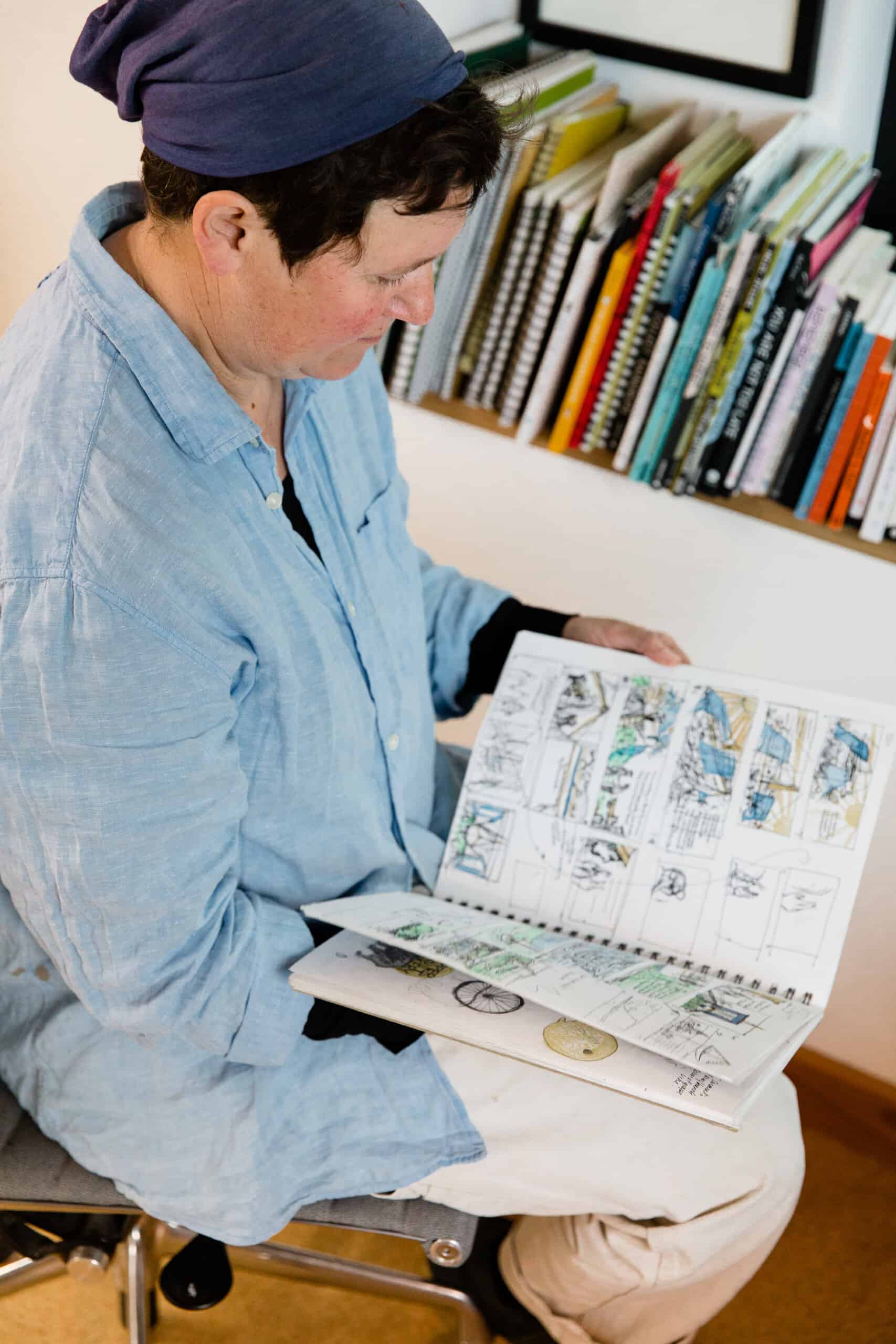

What was your first "break" in the kids' book world?
"After Apple I made a calendar, suggested by another dear artist friend. The calendars wended their way to New York and California. One day I received a call from a New York editor and the next call was from a California kids’ book agent. I suggested they talk, and the monograph of my calendar art, Collect Raindrops, was published by Abrams Books. Then the agent brought forth the text for All in a Day, written by Cynthia Rylant with my art in mind. That was my break into the kids’ book world. Or at least the publisher-supported book world."
“Something About The Sky was an experiment for me artistically. Rachel Carson’s writing is like no other. I am thrilled that children will be exposed to her voice and her way of thinking.”
We love that you were a part of the music, art, and riot grrrl scene in the 90s—doing art for Sleater-Kinney and dancing on stage with Nirvana. What was it like to be in the center of it all?
"I feel very lucky to have danced through the sound waves made by my friends and community. It was how we communicated. I sang in basement shows and toured college towns and met a larger community of people doing the same. I spent a lot of time at K Records, running up the back stairs to use their light tables and copier and eventually their computers at night and then dancing to the music that the bands made. I recorded two singles with the the K label. I don’t know if I was at the center of the center, as it was a swirling dance party of ideas and sounds and stories. I danced around and in it. The scene 'raised' me. And even within it, I was a bit feral, preferring to sing in alleyways instead of on stages. Unscrewing lightbulbs at parties so people would lose inhibition of being seen and start dancing with abandon. Taking visiting bands blackberry picking and watching birds along forgotten paths. And now here we are! And I would say YES it informs who I am today. I find happiness in feeling live music while blackberry juice drips down my arm."
Did you always know you wanted to be a mother?
"No. I knew I did not want to be a mother. But then I turned 30. And then, I needed to be a mother."
How did your relationship to your art, creativity, and career shift after becoming a mother?
"Efficiency! I did the same amount of work in half the time. My first book with Finn was Awake to Nap. I had to make each picture in the span of one nap in order to meet my deadline for an art show. It became an alphabet book that only goes from A to N as there wasn’t time for O-Z. And that is OK. Everyone knows how the alphabet story ends. You do what you can as a mother in half the time. My work productivity is now corroding a bit due to fantastical dinner dreaming unfettered by the Law of Providing a Balanced Diet for Growing a Stout and Smart Child…and time is wasted by smart phone newsweathernewsweather ad infinitum."
"Inspiration! The things kids say really are remarkable and inspiring. Plus there is a moving, curious figure drawing model with the cutest fingers with dimples instead of knuckles and feet in woolen socks to doodle and sketch and remember. The natural history of a growing child to wonder over every second."
"Education! I think I have a Doctorate in Children’s Literature by now. We read all the time. We read everywhere: breakfast, woods walk pauses, lunch, nap time, afternoon, dinner, car, bus, train, plane, boat rides. No trip was without 2 bags of books and stops at used book stores to find obscure titles such as The Curious Lobster. I didn’t have many kids’ books growing up. I now live in a house whose walls are made of books."
Your son, Finn, is now in college. What's he like?
"Lovely. Amazing. Kind. Smart. Polite. Observant. Skilled."
How has this new stage of transition into an "open nest"—and having a child move away from home—been like for you?
"Open Nest is much nicer than Empty Nest. Thank you for reframing that for me. It really does feel open. There’s more space! Physically and mentally. We were a very tight family and the years that Finn would be exploring farther afield as a teen were the years of staying at home and taking care of each other during the pandemic. But I always wanted to send my kid off to sea for three years. Now it is that time. I do miss him, but I am also thrilled for the life of adventure ahead for him. Finn is in university in Canada and visiting him involves a sea crossing upon a wave-rocked ship."
"We are freed from a daily school schedule (and U.S. holidays!). There is freedom to immediately pack our bags and drive to California to see a dying friend. And freedom to walk when we want, for as long as we want. Eat whenever our bodies desire and have it be just a salad, or grilled cheese and that’s fine. But we are still connected to his life and there are still moments of parental need and guiding and late night fretting. But he’s doing great figuring out a path in the world."
"Jay T and I had Finn fairly early in our relationship, so now there is time to remember and start up our relationship with each other again. And I have transitioned through menopause to boot! And through it, I found myself again! There I was, waiting for me to drop work for a quick dance and to run outside, get muddy and lost in thorny brambles."

How important was it to you to pass on your love for nature to your son?
"Finn was raised! In a mud wallow with a chicken friend, with sticks, and tree climbing, and sailing as a 1-year-old. He was shown birds and learned plants and woods lore. Some of his favorite books were field guides. He had access to real tools that were sometimes sharply known. He cut down trees and built forts and then his own cabin! I sewed patches onto patches onto patches, mending torn knees. I carried a bandaid in each pocket. We built this house with an outdoor shower to shower him off in before he came inside. We raised him with an intimate coexistence with the Earth and the Sea, mud in his toenails, salt crusted and barnacle scarred."
You've been publishing children's books for nearly 30 years—what keeps you inspired?
"Today. Cold water swimming. Remembering my fantastically wild child. Spring. Love. Thank you!"
What's your creative process like when working on your books?
"Sometimes it is the title. 1, 2, 3 Salish Sea is an example of that. Or a real adventure. Old Wood Boat is that. When I read the first draft to Finn, he remarked, 'But that’s just what we did.' Yeah! And that is a story. Or from Finn asking, 'Mama, is it Summer Yet?' in March. Ideas come from life for me."
"I then sit and write. And write and write and write and edit and start again. Then I make tiny sketches about 1” square and start to map it out visually. The little sketches are assembled into a tiny book and then approved by my editor. Then I make sketches the size the book will be and use those to make the final art. All along this is very old school with pencil and paper and eraser."
"My first book with a publisher, All in a Day, was very planned out. But now my editor and I have been working together for so long, I know she understands what the little sketches promise to be and my sketches are looser. I like to keep some mystery and chance in the making to compel me and keep me curious to see just what will happen. What will these hands make?"
We love your new book, Something About The Sky, which is built around an essay by Rachel Carson. Tell us about the book and what inspired you to create it.
"It’s wonderful to see how Rachel Carson’s work is still vital to our understanding of how the world works and our place in it."
"I was asked by Orion magazine to illustrate an excerpt written by Carson. I immediately said 'YES!' without even reading the excerpt. But then I read it and heard her voice strong and wonder-filled. No one writes like she did. I wanted to find the whole text and read it. Orion’s source for the excerpt was an excerpt as well and based on the transcript for a TV show, Omnibus, that Rachel wrote a script for. She was asked to write 'something about the sky' by a young viewer. In searching for the TV show that eventually aired, my editor went to the Yale Library and looked at Rachel Carson’s archives and found her typewritten script. We received permission from Carson’s trust and from the TV series. And I got to work!"
"Something About The Sky was an experiment for me artistically. I was on the edge of total disaster at all times! I painted the paper with ink. The results were nebulous and chance-filled. I then chose a painted paper to cut from, responding to the hues. I couldn’t sketch it out. I just had to go for it. I had conversations with the paper! And we—the paper, knife, and I—came up with some interesting images, like and unlike anything I have ever made previously."
"It was also joy to work with text that was scientific and poetic and challenged the reader to wonder rather than declaring certitude in an onslaught of facts. Rachel Carson’s writing is like no other. I am thrilled that children will be exposed to her voice and her way of thinking."


What do you hope readers gain by reading this book?
"To look up and wonder why. 'How come?' To become noticers."
Which children's books did you read and love when you were little?
"I loved Blueberries For Sal. I loved blueberry picking. Blueberries in the Northwest grow on bushes taller than a hopeful child. I had a copy of Moominsummer Madness which intrigued me with its bohemian mayhem, but it really was the art that I’d stare at. It is burned into my brain and part of my graphic language (Sal is too!). The Secret Garden and A Little Princess. I wanted to be saved from my attic room and eat real cake. And the idea that a robin could communicate with you seemed possible, and is really possible! You just have to notice and listen to the robins. I didn’t have shelves of books. I had only a few. Somehow we had a series on the great artists. The volume on Goya’s art was a favorite. I would sneak peeks at Saturn devouring his children in horror and dismay and with strange dangerous delight at the terrible beauty."
What advice would you give to an aspiring kids' book author or illustrator?
"I wanted to make children’s books since I was five. I did not take the straight path there. I don’t know the shortcut to that door. Ask a robin to show you the way."
What do you love about the kid-lit world?
"During this interview, I paused to go take a swim before the tide drops too low. A long proper swim on a sunny Sunday. There was a family with twins on the beach and two mergansers on what is left of the raft. The water was clear. And we swam for a long time. Maybe it was the family, us showing the kids what is possible, that lengthened the swim. And how does this relate to the kids’ book world? Raising other people’s children? Having a chance to expand the world a bit? Leaving clues to what is possible? And that there are many, many possibilities to each day and each life and that means for me, being a kids’ book maker, being able to stop an interview and take a swim."
Shop the Story
Share this story














